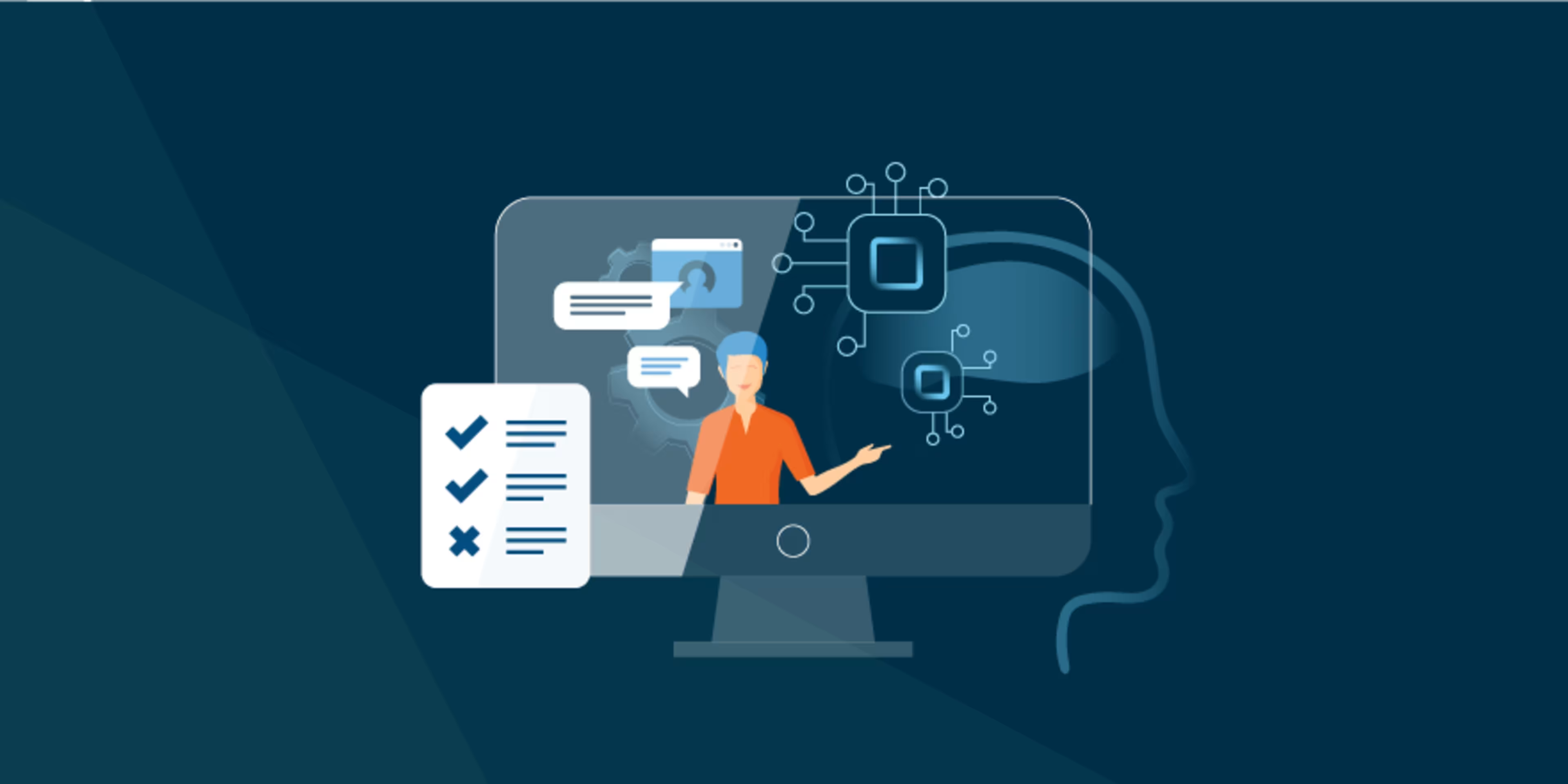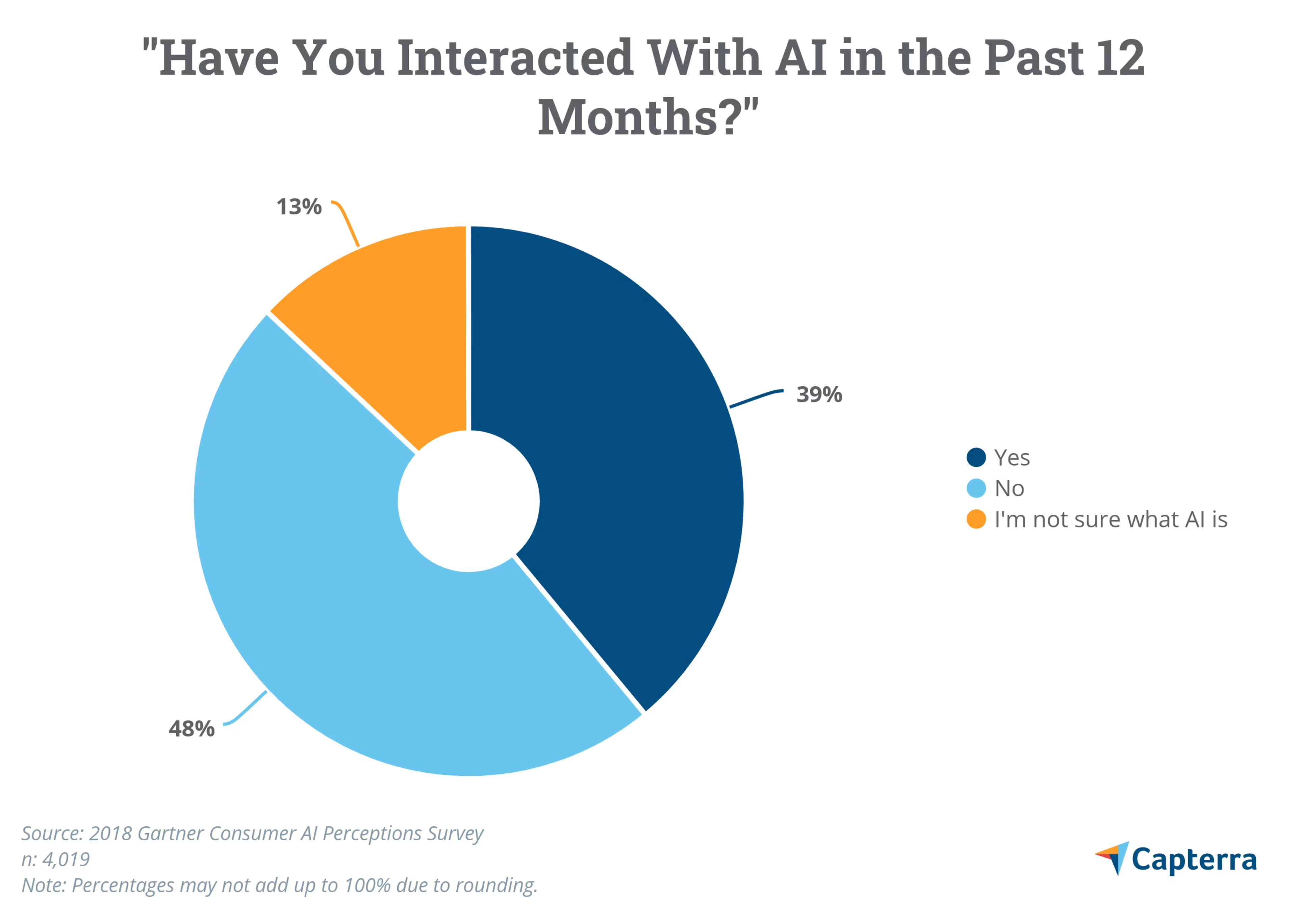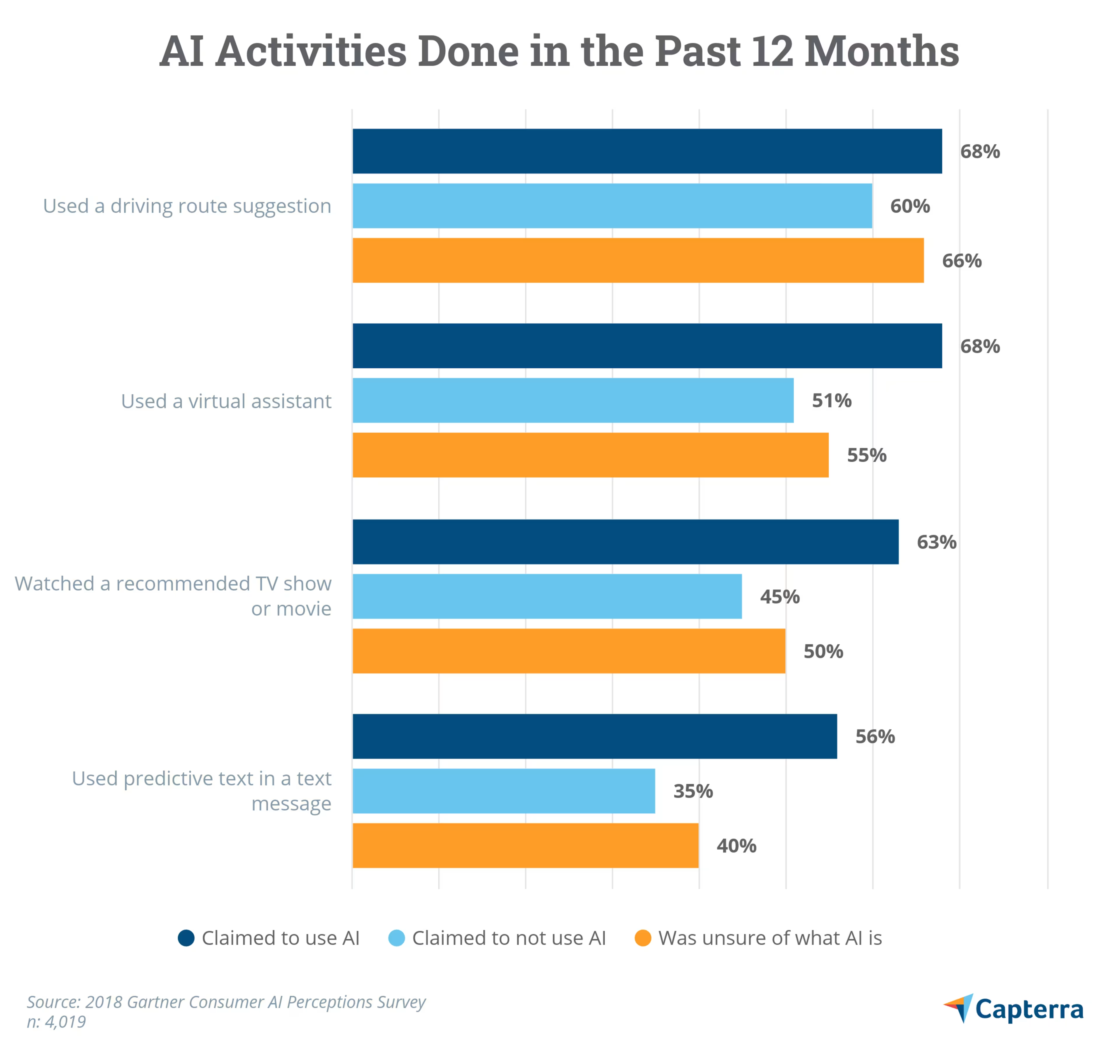These change management strategies can dramatically increase the likelihood of success for your AI implementation.

HR is not wasting any time when it comes to investing in artificial intelligence (AI) applications that improve the employee experience.
In a 2019 survey, 55% of chief human resource officers (CHROs) said they are already using AI or doing an AI pilot (full research available to Gartner clients). Even small businesses are getting in on the AI action.

Source: Small Businesses Aren't Ready for AI in HR—But They Need to Be
Before you can implement AI in your workplace, though—be it in the form of a chatbot, a virtual coach, or HR software with embedded AI capabilities—you need to take care of a major potential roadblock to your AI initiative’s success: your employees.
With fear-mongering headlines such as “How to Prep Your Career for the AI Job Apocalypse” still making the rounds, it’s important to address your workforce’s concerns with AI head-on. Implementing AI in the workplace without taking their trepidations into consideration is a surefire way to stifle AI usage, which will lead to project failure.
“Easy,” you’re thinking. “I’ll just explain how AI will benefit them! Then they’ll be on board.”
Well, not so fast.
Why touting the benefits of AI is the wrong move
The focus of a lot of workplace change management efforts—with AI or otherwise—is how the change will benefit the worker. The thinking goes that an employee will care more about how the change will impact them personally (their productivity, their efficiency, etc.) than how the change will impact the organization.
Here’s the thing though: Research shows this tactic isn’t effective. When change management efforts are centered around selling the benefits of the change, Gartner finds this approach has no significant impact on the probability of the new initiative’s success (full research available to Gartner clients).
On the other hand, when change management efforts are centered around employees understanding the goal of the change, the probability of success for the new initiative improves. So, what does this mean for your AI implementation?
You shouldn’t try to sell employees on how AI will improve their life. It won’t resonate. Instead, you should focus on increasing employee understanding of AI and what your organization’s goals are with AI in the workplace.
In the next section, we’ll cover exactly how to do that.
3 ways to get employees on board with AI in the workplace
Competing with the promise of AI is a lot of noise and uncertainty, especially from an employee’s perspective. Though it sounds daunting, HR departments need to do the work to explain what AI actually is and involve employees in AI conversations, or they risk facing implementation failure.
Here are three strategies to get employees on the same page about AI in the workplace:
1. Show employees how AI is already affecting their lives
A pair of stats from a 2018 Gartner survey perfectly illustrate how much confusion there is around AI. The first: Only 38% of consumers said they had used AI in the past 12 months. The majority said they hadn’t used AI, or weren’t sure what AI even is (full research available to Gartner clients).

Now, here’s the kicker. When those that said they hadn’t used AI or weren’t sure what AI is were asked if they had done an activity that leverages AI—driving a suggested route on Google Maps, using a virtual assistant such as Siri, watching a recommended show on Netflix—a majority said they had.
In fact, respondents reported similar usage rates with these activities, regardless if they knew they were using AI or not.

These stats show that employees are more than likely already using AI in their daily lives, even if they don’t know it. Highlighting these use cases can breed familiarity and contextualize how AI will fit into the workplace.
For example, if you’re implementing an HR chatbot, you can relate the goal of getting employees quicker answers to questions about company policies to how employees might currently be using Siri or Alexa to get the answers they need.
Another example is personalized recommendations. Just how Google Maps can suggest the route with the least traffic, or Netflix can suggest the show you would like the most, AI in HR software might point employees to a training course they should check out, or an action with their performance appraisal they should take.
2. Start an AI dialogue
Have you ever had a boss change something at work without asking for your feedback or giving you an opportunity to ask questions? It can be pretty frustrating, right? This “top-down” approach to change management is common, despite its tendency to plant seeds of resentment and feelings of not being heard.
Avoid the “top-down” approach. Instead, you should work to make your AI implementation an opportunity for conversation. Through company workshops, or even just meetings between managers and their team, you can placate a lot of the anxiety around AI by giving employees a chance to voice their concerns.
Here are some ideas for conversation starters to open up a dialogue about your AI deployment:
What scares or worries you the most about AI and why?
In what ways do you think differently about AI at work and AI in your personal life?
In what ways do you see AI having a positive impact on your work?
How might you change your day-to-day habits to fully take advantage of AI’s positive attributes?
If AI replaced parts of your job, how would you hope your organization would respond?
Not only does research show that this conversational style of change management increases the probability of initiative success three-fold, but it also results in fewer employees expressing anger or anxiety over the change (full research available to Gartner clients).
3. Involve employees in future AI investment decisions
Once employees have a better understanding of AI, think of the amazing advantage you have on your hands. You have a workforce of people, entrenched in the nuts and bolts of the day-to-day in your business, who can recognize more opportunities for AI to better your organization. Why wouldn’t you leverage that?
Though you have to plan accordingly—you don’t want every employee involved at the same time, and you don’t want to ignore your organization’s requirements and constraints—empowering workers to provide input on your AI strategy can foster even more excitement and acceptance around AI moving forward.
Whether through surveys, meetings, forums, or another medium, employees can suggest other organizational problems that would best be serviced by AI, or advise how hiccups with your last AI implementation should inform future purchase decisions. They can also be a valuable resource in demoing products.
Organizations that co-create change strategies with their employees, instead of exclusively trusting leaders to set strategy, see a 10-percentage-point gain in the probability of change success (full research available to Gartner clients).
Your employees aren’t the only ones who are unprepared
AI represents massive disruption to the workplace, to the point where even major enterprises aren’t ready. Less than 10% of CHROs believe that their organization is prepared for the future of work, making it clear that there is still a lot of work to do when it comes to AI.
If you’re worried that your HR technology stack isn’t up to snuff for what AI has in store, head to our HR software directory page to compare top-rated options and read about each vendor’s AI roadmap.